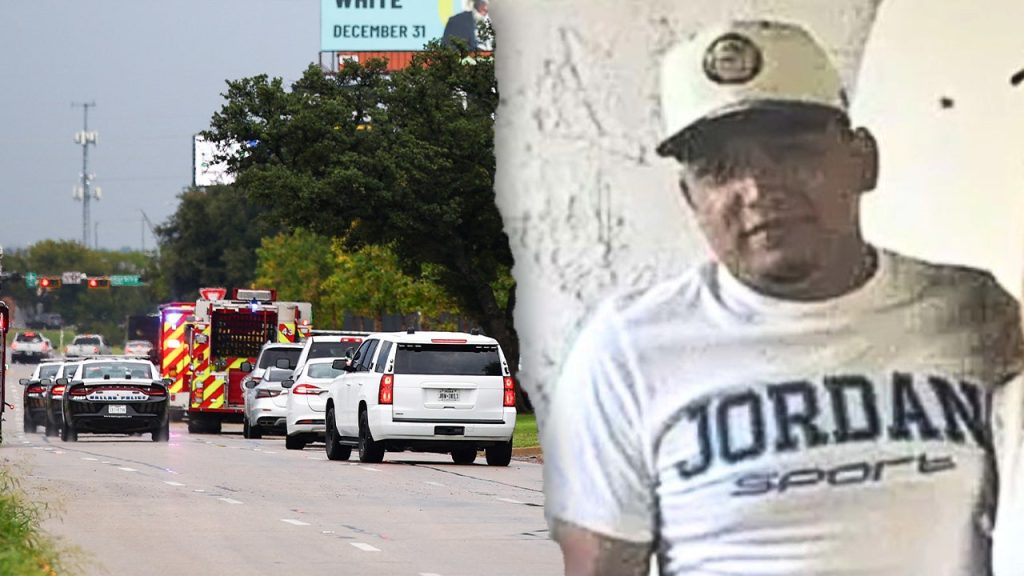Tragedy Strikes Dallas ICE Facility: Second Detainee Dies After Sniper Attack
A heart-wrenching tragedy has unfolded in Dallas as a second detainee has succumbed to injuries sustained during a sniper attack on an Immigration and Customs Enforcement (ICE) facility. The Department of Homeland Security confirmed that Miguel Ángel García-Hernández, a 32-year-old father of four with a fifth child on the way, died after being removed from life support following the September 24 shooting. His wife Stephany Gauffeny shared her devastation in a statement: “My husband Miguel was a good man, a loving father and the provider for our family. We had just bought our first home together and he worked hard every single day to make sure our children had what they needed. His death is a senseless tragedy that has left our family shattered. I do not know how to explain to our children that their father is gone.” The human toll of this attack extends beyond headlines and statistics, leaving a family forever altered and children who will grow up without their father.
García-Hernández, originally from Mexico, had a complicated legal history in the United States. He was arrested on August 8 in Arlington, Texas, facing charges of driving while intoxicated, evading arrest with a vehicle, and fleeing police, which prompted ICE officials to file an immigration detainer against him. Records indicate previous charges for failing to identify himself to law enforcement in 2011 and 2017, with ICE having lodged a detainer after the 2017 arrest, though he was released before immigration authorities could take custody. The attack also claimed the life of Norlan Guzmán-Fuentes, a 37-year-old from El Salvador, and wounded Jose Andres Bordones-Molina, a Venezuelan immigrant. These individuals, regardless of their immigration status or past encounters with law enforcement, were human beings whose lives were cut short by a senseless act of violence.
The perpetrator of this horrific attack, 29-year-old Joshua Jahn, took his own life following the shooting. Federal officials have revealed disturbing details about Jahn’s preparation and mindset. The FBI discovered anti-ICE messages engraved on ammunition found near his body, suggesting an ideologically motivated attack. FBI Director Kash Patel shared that Jahn had downloaded documents listing DHS facilities and had searched for apps tracking ICE agents’ presence between August 19 and 24. In the hours leading up to the shooting, he researched ballistics information and viewed the “Charlie Kirk Shot Video,” indicating a methodical approach to his deadly plan. The evidence points to what Patel described as “a high degree of pre-attack planning,” painting a picture of a man determined to carry out violence against immigration authorities.
Perhaps most chilling was a handwritten note recovered by investigators in which Jahn wrote: “Hopefully this will give ICE agents real terror, to think, ‘is there a sniper with AP rounds on that roof?'” This message reveals his intent to not only kill but to instill fear in federal agents performing their duties. The shooting occurred while ICE officers were bringing detainees into the Dallas facility, with sources reporting that the detainees were inside a law enforcement van when gunfire erupted. This calculated attack targeted vulnerable individuals in transit, maximizing the potential for casualties and creating a scene of chaos and terror. The premeditation involved highlights the dangerous intersection of extreme anti-government sentiment and access to weapons.
This tragedy in Dallas adds to a disturbing pattern of targeted violence against government facilities and personnel. It follows other recent incidents involving shooters using engraved bullets, suggesting a troubling trend of ideologically motivated attacks. The victims in this case were not just statistics or political symbols—they were real people with families, dreams, and futures. García-Hernández was on the cusp of welcoming a new child into the world and had recently achieved the milestone of homeownership with his family. Guzmán-Fuentes similarly had his own story, relationships, and aspirations cut short. These human dimensions often get lost in the political debates surrounding immigration enforcement, but they represent the true cost of such violence.
As communities grapple with the aftermath of this shooting, questions arise about security measures at federal facilities, the rhetoric surrounding immigration enforcement, and how to prevent such tragedies in the future. For the families left behind, however, these broader discussions offer little comfort in the face of overwhelming loss. Stephany Gauffeny now faces raising five children alone, explaining to them why their father won’t be coming home. The ripple effects of this violence will continue for decades as these children grow up without their father’s presence at birthdays, graduations, and other life milestones. Beyond policy debates and political positions, this attack represents a fundamental human tragedy—lives cut short, families shattered, and communities shaken by senseless violence that solves nothing while causing immeasurable pain.


